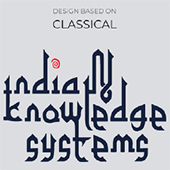Indian Knowledge Systems use the ancient and indigenous knowledge of India to arrive at principles and techniques that are timeless, unique, and based on centuries of work. While the meticulously detailed temples with their mathematical grids are awe inspiring, the simple and innovative design solutions and techniques encountered in the rural and urban ‘wilds’ of India are genuinely surprising and inspiring. There isn’t a shortage of indigenous solutions that surpass expensive designs while being sustainable, cheap and accessible. NEP 2020 highlights the importance of preserving and promoting India’s cultural wealth, as it is important for the nation’s identity as well as for its economy. Indigenous Indian design has developed akin to evolution, arising at times from necessity and limited resources, birthing the best of ideas. Indian Knowledge Systems can be incorporated both as course content and as a way to teach the course itself, with its old values and methods.
Since the topic of Indian Knowledge Systems is immensely vast, spanning over a large amount of content and time, it is important to keep a singular focus. For that, it is important to first realise all the subtopics which could potentially be a part of the course, or at least know their method of classification. Some ways to potentially classify Indian Knowledge Systems can be:
1. Historical (knowledge gathered from scriptures and ancient documentation) or contemporary (looking at modern grassroots innovations). Contemporary innovations could be those done by people in extreme environments, either in rural or urban circumstances.

Figure 2: Classifications of Indian Knowledge Systems
2. According to era: ancient (before Mughals), medieval (Islamic) and modern (Post British)
3. Based on discipline, like Architecture, arts, etc.
4. Based on modern locations. India is huge, and focus could be set on Indian Knowledge Systems from specific states and communities.
5. Based on existing classification within design education, like colour, composition, etc.
6. Ancient scriptures (shastras) could be classified and one could be focussed upon. Another source of ancient knowledge would be curricula of ancient universities like Nalanda, Taksha Shila, Vikramshila and Vallabhi.
Exercises like scouting for local techniques, materials and products could make learners aware of the innovations in design around them. Additionally, Indian theories, spatial strategies and examples of visual artefacts taken pre-Bauhaus could challenge or complement modern theories of composition and geometry. This knowledge could be documented and applied to modern problems and needs.

